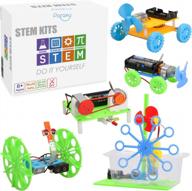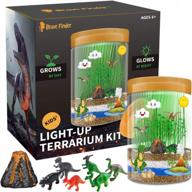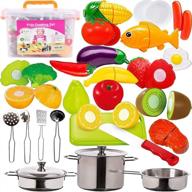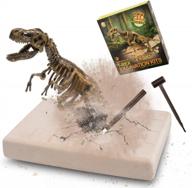How to choose the right size Newton's cradle for your child?
Newton's cradles make great educational toys for kids to learn about physics concepts like energy transfer and momentum. When choosing the right size Newton's cradle for your child, there are a few key factors to consider:
Age of the Child
- For younger kids ages 5-7, choose a small 4-5 ball cradle that is lightweight with plastic or wooden balls around the size of a ping pong ball.
- For older kids ages 8-12, you can opt for a larger 5-7 ball cradle with bigger, heavier metal balls around the size of a golf ball.
Safety
Make sure to select a cradle with balls that are smooth, not sharp edged, and sturdy strings that won't break. Avoid glass or very heavy balls.
Height of Setup
The cradle should be mounted at a height where your child can comfortably reach to push the end balls and see the swinging pendulum motion at eye level.
| Child's Height | Recommended Height of Cradle Center |
|---|---|
| 3 - 3.5 feet tall | 2 feet off the ground |
| 4 - 5 feet tall | 3 feet off the ground |
Getting a Newton's cradle that is sized appropriately for your child's age and height will allow them to fully engage with the toy and have fun discovering physics!
How to set up a Newton's cradle on a desk or table?
Setting up a Newton's cradle on a flat, stable surface like a desk or table allows you to observe the mesmerizing motion of the swinging balls. Here are some tips for proper setup:
Choose a Location
- Pick a spot free of obstructions like books or electronics where the balls have room to swing.
- Make sure the location allows you to view the cradle at eye level.
Mount the Cradle
Use the provided clamps, screws, or adhesive pads to securely mount the cradle frame centered on the edge of the desk or table.
Adjust Height
Set the height so the bottom of the cradle balls are at least 2 inches from the desk surface.
- For a shorter cradle under 12 inches, raise height to around 2 feet.
- For a longer cradle over 12 inches, set height to 2.5-3 feet.
Check Alignment
Verify all cradle ball strings are exactly vertical and balls are centered from front to back when at rest.
Test Pendulum Motion
Give the end balls a gentle push and make sure the balls swing freely and collide properly. If not, adjust string alignments.
Optional Enhancements
- Add a backdrop to highlight motion against a plain surface.
- Provide extra lighting to illuminate the balls.
- Mount at child height for hands-on engagement.
With proper setup on a desk or table, a Newton's cradle becomes an engaging desktop kinetic art installation for learning physics!
How to teach physics concepts like energy transfer with a Newton's cradle?
A Newton's cradle is a great hands-on tool for learning about physics concepts like energy transfer, conservation of momentum, and collisions.
Potential and Kinetic Energy
When the end ball is pulled back, it gains potential energy. When released, this potential energy converts into kinetic energy as the ball swings down.
Energy Transfer
- When the moving ball strikes the stationary balls, its kinetic energy is transferred along the line, with the last ball bouncing up.
- This demonstrates the concept of conservation of energy as the energy is passed along and not lost.
Momentum Transfer
The momentum of the moving ball gets transferred to the stationary balls, setting the last ball into motion.
Inelastic Collisions
The balls collide and stick together briefly, exhibiting inelastic collisions.
Hands-on Learning
- Have students take turns pulling balls back and observing results.
- Add more balls and see how the motion changes.
- Experiment with different release heights.
Supplementary Activities
- Calculate ball velocity before and after collisions.
- Time the oscillations and calculate the period.
- Predict energy and momentum transfer with different ball sizes/numbers.
Allowing hands-on experimentation with a Newton's cradle is a fun and engaging way to reinforce physics concepts related to energy and momentum transfer!
How to safely use a Newton's cradle without breaking it?
Newton's cradles are captivating desk toys that demonstrate physics principles through colliding metal balls. Here are some tips to use them safely and prevent damage:
Proper Setup
- Mount securely on a flat, level surface with adequate clearance for pendulum motion.
- Align strings perfectly vertical and center balls.
- Set proper height so balls don't hit desk when swinging.
Careful Handling
- Move deliberately and slowly when pulling balls back.
- Release gently, don't fling balls forcefully.
- Don't try to stop swinging balls with your hands.
Maintenance
- Periodically check string tensions and retie if loose.
- Wipe balls with soft cloth to remove dirt and oil buildup.
- Check for signs of metal fatigue or cracks.
Safe Use
- Supervise young children using the cradle.
- Don't allow hitting the balls from the side or perpendicular.
- Prevent overextending ball swings.
With proper care, setup, handling, and maintenance, a Newton's cradle can provide years of mesmerizing physics demonstrations. Follow these tips so you can safely enjoy this educational toy.
How to clean and maintain a Newton's cradle over time?
With its swinging metal balls, a Newton's cradle is prone to attracting dirt and dust. Performing occasional cleaning and maintenance will help keep your cradle working smoothly for years.
Cleaning the Balls
Wipe down each metal ball individually using a microfiber cloth to remove dust and dirt. For steel balls, use a steel polish like Simichrome to make them shine. For brass or chrome balls, use a specialized metal polish.
If balls accumulate grime in hard to reach spots, detach them and clean individually before reattaching. Take care not to lose any small washers or fasteners.
Checking the Strings
Examine the suspension strings closely. Look for any fraying or breakage. Test the tension by gently bouncing the balls - they should swing smoothly without tangling. Retie strings if needed to adjust tension.
Inspecting Connections
Verify all clasps attaching strings to balls and frame are secure. Tighten any loose clasps. Check clasps for wear or damage. Replace any worn parts.
Lubricating Linkages
Apply a small amount of light machine oil or sewing machine oil to any joints or linkage points connecting cradle pieces. This prevents squeaking and sticking.
Testing Alignment
Periodically check that strings are perfectly vertical and balls sit centered when at rest. Adjust to realign if needed.
With proper cleaning, inspection, lubrication and occasional adjustments, your Newton's cradle can provide endless fascination for years to come.
Top products in 🔬 Science Kits & Toys
How to troubleshoot if the balls don't collide properly in a Newton's cradle?
When a Newton's cradle doesn't work right, with the balls failing to collide and transfer energy, it likely means something is out of alignment. Here are some troubleshooting tips:
Check String Angles
Make sure all suspension strings are perfectly vertical. Even slightly angled strings can prevent the pendulum motion from working correctly. Realign strings if needed.
Inspect Ball Positioning
Balls must be centered in the middle of the strings when at rest. If they are off-center or touching strings, it can restrict motion. Realign balls to be centered.
Look for Obstructions
Remove any objects obstructing the ball path. Check that ball motion is not impeded by placing cradle too close to walls or desk edges.
Test String Tensions
Pluck each string to verify consistent tension. If strings are loose, balls will not transfer energy efficiently. Retie loose strings.
Check for Wear
Inspect strings, clasps and balls closely for any cracks or damage which may alter movement. Replace any worn parts.
Adjust Collision Point
The ball collision point can be adjusted up or down slightly by retying strings at different lengths. Center the collision point.
Verify Level Mounting Surface
Cradle must be mounted on a flat, level surface. Check for small wobbles or tilts in the base and correct if found.
With attention to alignment, positioning, obstructions and proper functioning of parts, the balls should once again collide cleanly and transfer energy in an entrancing display.

















